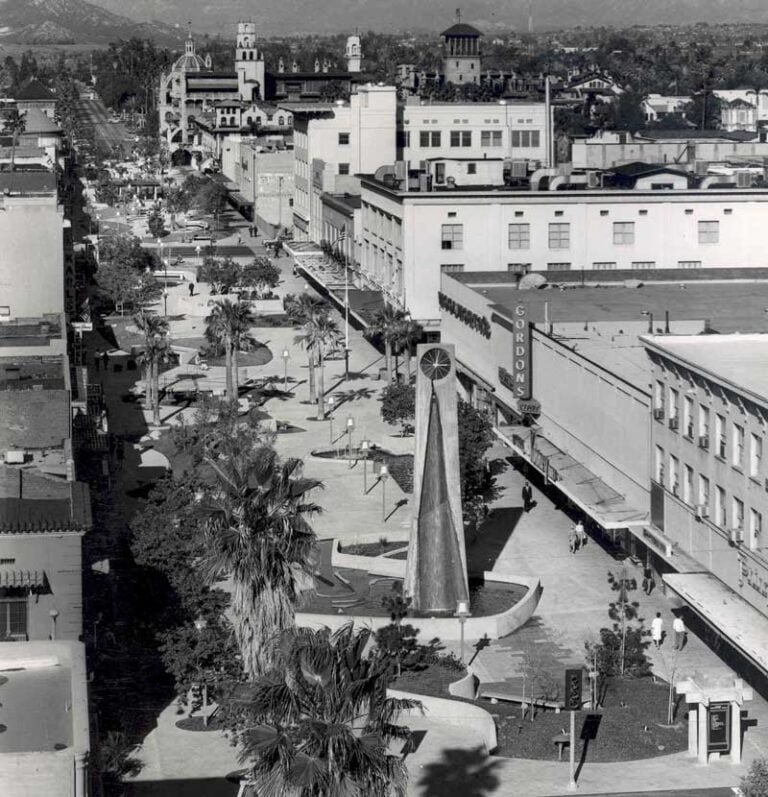Road Trip: Fresno
This entry kicks off a semi-occasional feature we’ll be calling “Road Trip” — a chance to explore other cities and areas within California, particularly those outside the three major metropolitan regions: Los Angeles, San Francisco and San Diego. Everyone knows these places, but what about the likes of Fresno, Stockton and Bakersfield? The latter three are relatively large cities that in many states would be the largest and most dominant city. But in California, they are but one of at least a dozen cities in excess of 300,000 residents.
Our aim will be to spotlight these lesser-known, mid-major cities. In some cases, we’ll toss in a smaller city (such as Visalia) or a larger city essentially hidden within one of the major metropolitan areas (such as Chula Vista). From a basic urban/civic planning perspective, we’ll take a somewhat cursory look at their urban form, and in particular, their downtown cores — if there is one — and see what’s there and what isn’t. We’ll then compare and contrast them relative to Riverside, looking for what makes them unique — or not.
Our hope is to gain better appreciation for these somewhat overlooked places and possibly learn a thing or two along the way about how to improve and strengthen our own city.
____________________
Road Trip: Fresno

Flash: Road Trip: Fresno slideshow

Flash: Fresno Fashion Fair Mall
(with interior views reminiscent of
The Broadway dept. store in Riverside)
For being a city located at the center of California’s dusty, but agriculturally rich “Central Valley,” Fresno belies expectations. Many Californian’s simply assume the worst and never really give the place a chance, making it a good candidate in which to start this series.
First impression: Fresno is a big city — 470,000 according to 2007 Census estimates — that feels somewhat smaller than it is. The downtown core, though not overly large for a city of its size, is a mixture of old and new. And, as with every major California city, Fresno is surrounded by expansive, suburban housing tracts. Thanks to numerous trees lining many major streets, particularly those in the more recent developments and newer commercial areas, Fresno appears much greener than one might expect. Looming in the distance to the east is the Sierra Nevada mountain range, including Kings Canyon and Sequoia national parks (with 14,494-foot Mt. Whitney on the backside). Located about an hour to the northeast is Yosemite.
How it’s similar: Fresno and Riverside actually share much in common. Both support a major university and are seats of county government with the various civic and cultural institutions inherent therein. Physically, downtown Fresno also contains a classic street grid pattern and a 1960s-era pedestrian mall. Likewise, Fresno’s post-war growth has taken on a predominantly suburban form — partly to the detriment of downtown. Geographically, the metropolitan region is partially hemmed in by mountains. And, as with the majority of California’s valleys, summers can get a bit toasty and the air does get somewhat stagnant at times.
How it’s different: Unlike Riverside, Fresno is unquestionably the dominant city within the Fresno-Madera metropolitan region. As such, it has its own television market. Fresno’s moderate skyline is dominated by mostly older and slightly taller buildings. Though both cities have modern convention centers, the latter also has a mid-sized arena and an adjacent concert hall/civic theater. And although Fresno has a passenger airport with an Air National Guard unit, the city does not have a major military base the likes of March Field near Riverside. Once outside Fresno, the landscape turns into mile upon mile of farmland.
Biggest surprise: Parts of downtown appear to be in a time warp of sorts, with a small, but impressive collection of pre-WWII “Renaissance Revival” styled towers (one | two | three | four). Arguably downtown’s most unique aspect, the outdoor Fulton Mall (1964) offers a nice respite from California’s car-dominated landscape. Though not overly vibrant, the pedestrian mall has a lot of potential. A recent addition is a minor league baseball stadium located at the mall’s southern end. Interestingly, the landscape design of Fresno’s Fulton Mall is very similar to the one in downtown Riverside, which opened two years after Fresno’s. Both malls contain elements (Fresno | Riverside) designed by landscape architect Garrett Eckbo of Eckbo, Dean, Austin and Williams. One key difference is the amount of public art situated along Fresno’s mall, at least double of that found at Riverside’s version.
Biggest disappointment: As a predominantly low-rise campus (one | two) with several large parking lots and no overly distinctive buildings, the campus of California State University at Fresno felt more like an overgrown high school. In fact, one can easily drive past the campus without even realizing. However, the university is a major player in local sports and includes a football stadium, a recently built arena/rec center, and separate stadiums for both baseball and softball.
What can Riverside learn? One aspect of Fresno that Riverside can take note of is that city’s long-term commitment to the larger civic/regional entities, such as the sports arena, civic theater and even the new minor league baseball stadium. And although Riverside’s own pedestrian mall is currently undergoing its first major renovation, the city should keep tabs on Fresno’s similarly designed outdoor mall. In particular, Riverside should take note of the amount of public art dotting Fresno’s mall.
Related


I really like this new section of yours and look forward to seeing more Cities. Nice work!
(Pub: Sep. 6 2008)
Hopefully, we’ll be able to better appreciate these lesser-known, mid-major cities/areas by finding (and showing) a few of their unique qualities and comparing and contrasting them with Riverside. How are they the same? How are they different? And, what can we learn from them?
In reality, Riverside has more in common with cities like Fresno and Bakersfield than with Irvine and Santa Monica. The former are long-standing, county/civic/cultural centers within their respective regions. The latter are smaller, less dominant regional/satellite cities. And though Riverside also has commonalities with places like Irvine and Santa Monica — and, for better or worse, in some respects is even becoming more like them — these cities typically do not have many of the long-standing civic and cultural entities as does Riverside. Thus, a complete comparison is much more difficult. But, with that said, we can certainly learn other aspects from them.
At any rate, we look forward to discovering a few nice surprises along the way as well.